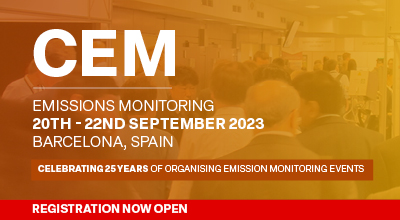| Abstract Title: | Characterisation of Particle Emissions from Domestic Boiler Burning Different Biomass Pellets |
| Presenter Name: | Dr Igor Dyakov |
| Co-authors: | Mr Benjamin Bergmans Mr Franois Idczak Mr Herve BREULET |
| Company/Organisation: | ISSeP, Institut Scientifique de Service Public |
| Country: | Belgium |
Abstract Information :
Following the 20-20-20 target, using the biomass fuels has shown a determined growth in Belgium as well as in many countries in recent years. Accordingly, the public authorities have engaged a number of incentives including the expansion of the small scale heating appliances that consume the biomass fuels. It is of a certain interest to employ the biomass of various origins. Many studies have demonstrated that biomass combustion generates large amount of ultra-fine particles. The assessment and comparison of the emission characteristics along with the heating appliance performances when using different kinds of the biomass fuels could then be expected.
The purpose of this work was to measure the number concentrations and size distributions of the particles emitted from small scale biomass boiler using different biomass fuels, to determine their emission factors and to characterise the boiler performances.
The particle concentrations were measured in real time by an ELPI+ analyser in a range of aerodynamic diameters between 0.006 and 10 µm. A portable dilution system Palas VKL-10E one stage ejector dilutor with the predetermined degree of dilution was implemented in this study. The dilution ratio was controlled by measuring the carbon dioxide concentrations in the raw gas and in the diluted samples. The components of the gas emission were measured simultaneously using Gasmet DX4000 FTIR and Horiba PG-300 gas analysers.
In this study a 40 kW pellet boiler set in laboratory conditions was adopted as a small scale heating appliance and consequently as a source of gas and particle emissions. Five sorts of the biomass pellets were implemented. They consisted of wood, peat, reed canary grass, pectin waste from citrus shells and apple pomace. The maximum and minimum power output regimes recommended by supplier and also intermediate power output regimes of the boiler were tested during the emission measurements. It was found that for the different fuels it is essential to use the optimal settings of the boiler to reduce the particle and gaseous emissions. The total particle concentrations for all kids of the biomass pellets were varying between 3x106 and 9x107 cm-3. The results are also represented as particle number concentration distributions. The comparison of the results is discussed.
Walloon Government supported this work through the Moerman founds. Authors are grateful to the European Regional Development Fund (ERDF/EFRO), project no. P12-05 EMOVO.

